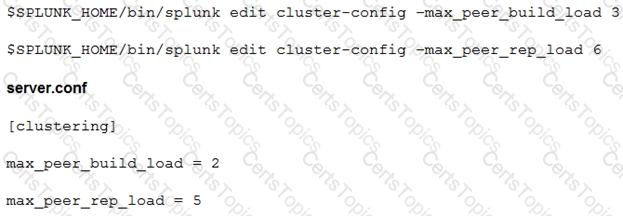When adding a new search head to a search head cluster (SHC), which of the following scenarios occurs?
What should be considered when running the following CLI commands with a goal of accelerating an index cluster migration to new hardware?

When using SAML, where does user authentication occur?
As data enters the indexer, it proceeds through a pipeline where event processing occurs. In which pipeline does line breaking occur?
A customer wants to understand how Splunk bucket types (hot, warm, cold) impact search performance within their environment. Their indexers have a single storage device for all data. What is the proper message to communicate to the customer?
How does Monitoring Console (MC) initially identify the server role(s) of a new Splunk Instance?
Data can be onboarded using apps, Splunk Web, or the CLI.
Which is the PS preferred method?
What happens when an index cluster peer freezes a bucket?
A customer has a network device that transmits logs directly with UDP or TCP over SSL. Using PS best practices, which ingestion method should be used?
The customer has an indexer cluster supporting a wide variety of search needs, including scheduled search, data model acceleration, and summary indexing. Here is an excerpt from the cluster mater’s server.conf:

Which strategy represents the minimum and least disruptive change necessary to protect the searchability of the indexer cluster in case of indexer failure?
Which command is most efficient in finding the pass4SymmKey of an index cluster?
When can the Search Job Inspector be used to debug searches?